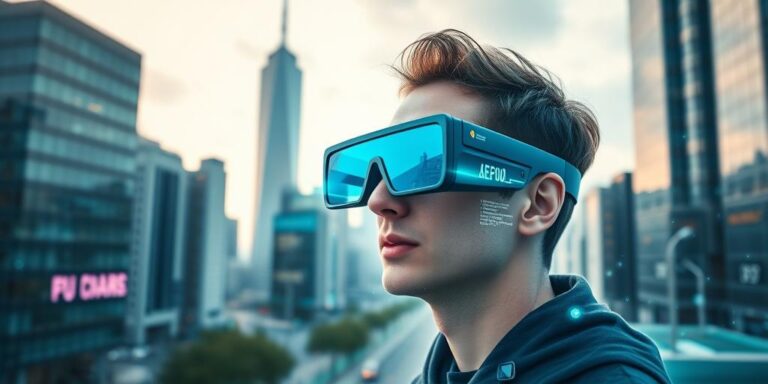The Blurring Line Between Smartphones and AR Glasses (2027)
For years, the tech world has speculated about the future of Augmented Reality (AR) glasses. While early iterations faced challenges in terms of aesthetics, functionality, and battery life, recent advancements suggest that AR glasses are on the cusp of mainstream adoption. More interestingly, the capabilities of smartphones and AR glasses are beginning to converge, hinting at a potential future where the two devices become increasingly indistinguishable.
Technological Advancements Driving Convergence
Several key technological advancements are fueling this convergence:
- Miniaturization of Components: The ability to pack powerful processors, high-resolution displays, and sophisticated sensors into increasingly smaller form factors is crucial. This allows AR glasses to offer smartphone-like performance without being bulky or uncomfortable.
- Improved Battery Life: Battery technology has seen significant improvements, enabling AR glasses to run for extended periods without needing frequent charging. This is essential for practical, everyday use.
- Advanced Connectivity: With the proliferation of 5G and Wi-Fi 6, AR glasses can now leverage high-speed, low-latency connectivity for seamless access to cloud-based services and data.
- Enhanced AR Software and Applications: A growing ecosystem of AR applications is making these devices more versatile and useful, blurring the lines between traditional smartphone tasks and immersive AR experiences.
Overlapping Functionalities
Smartphones and AR glasses are starting to offer similar functionalities:
- Communication: Both devices facilitate communication through calls, messaging, and video conferencing. AR glasses can overlay information onto the user’s view, providing contextual data during conversations.
- Navigation: AR glasses can provide turn-by-turn navigation with visual cues overlaid on the real world, similar to smartphone-based navigation apps.
- Entertainment: Both platforms offer access to a wide range of entertainment options, including streaming video, music, and games. AR glasses can create more immersive and interactive entertainment experiences.
- Information Access: AR glasses can provide instant access to information by overlaying relevant data onto objects or scenes in the user’s field of view, complementing the information access capabilities of smartphones.
The Potential Future
Looking ahead to 2027, the convergence of smartphones and AR glasses could lead to several possible scenarios:
- AR Glasses as Primary Computing Device: AR glasses could become the primary computing device for many users, replacing smartphones for most tasks. This would require significant improvements in usability, battery life, and application availability.
- Hybrid Devices: We might see the emergence of hybrid devices that combine the functionality of smartphones and AR glasses. These devices could be used as traditional smartphones but also offer AR capabilities when needed.
- Specialized Devices: Smartphones and AR glasses could continue to coexist as specialized devices, each catering to specific use cases. Smartphones would remain the go-to device for mobile communication and general-purpose computing, while AR glasses would be used for more immersive and context-aware experiences.
Challenges and Considerations
Despite the promising outlook, several challenges need to be addressed before AR glasses can truly replace or converge with smartphones:
- Privacy Concerns: The ability of AR glasses to record and analyze the user’s surroundings raises significant privacy concerns. Robust privacy safeguards and regulations are needed to protect user data.
- Social Acceptance: AR glasses need to be socially acceptable for everyday use. Design and form factor will play a crucial role in overcoming social barriers.
- Cost: AR glasses need to be affordable for a wide range of consumers. Technological advancements and economies of scale will help drive down costs.
Conclusion
The line between smartphones and AR glasses is indeed blurring. Fueled by technological advancements and overlapping functionalities, AR glasses are poised to play an increasingly important role in our digital lives. Whether they completely replace smartphones or coexist as specialized devices remains to be seen. The key to success will lie in addressing the challenges related to privacy, social acceptance, and cost, paving the way for a future where AR glasses seamlessly integrate into our daily routines.




